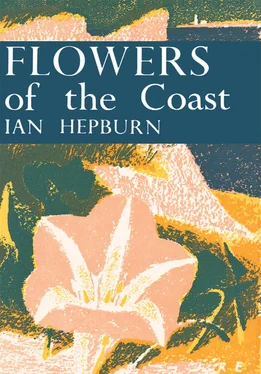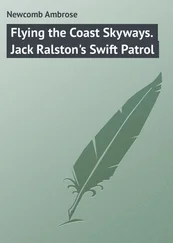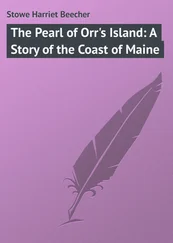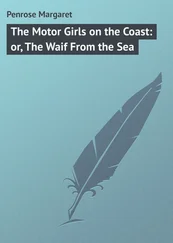Ian Hepburn - Flowers of the Coast
Здесь есть возможность читать онлайн «Ian Hepburn - Flowers of the Coast» — ознакомительный отрывок электронной книги совершенно бесплатно, а после прочтения отрывка купить полную версию. В некоторых случаях можно слушать аудио, скачать через торрент в формате fb2 и присутствует краткое содержание. Жанр: unrecognised, на английском языке. Описание произведения, (предисловие) а так же отзывы посетителей доступны на портале библиотеки ЛибКат.
- Название:Flowers of the Coast
- Автор:
- Жанр:
- Год:неизвестен
- ISBN:нет данных
- Рейтинг книги:4 / 5. Голосов: 1
-
Избранное:Добавить в избранное
- Отзывы:
-
Ваша оценка:
- 80
- 1
- 2
- 3
- 4
- 5
Flowers of the Coast: краткое содержание, описание и аннотация
Предлагаем к чтению аннотацию, описание, краткое содержание или предисловие (зависит от того, что написал сам автор книги «Flowers of the Coast»). Если вы не нашли необходимую информацию о книге — напишите в комментариях, мы постараемся отыскать её.
Flowers of the Coast — читать онлайн ознакомительный отрывок
Ниже представлен текст книги, разбитый по страницам. Система сохранения места последней прочитанной страницы, позволяет с удобством читать онлайн бесплатно книгу «Flowers of the Coast», без необходимости каждый раз заново искать на чём Вы остановились. Поставьте закладку, и сможете в любой момент перейти на страницу, на которой закончили чтение.
Интервал:
Закладка:
I am deeply indebted to many authors, whose books and original papers I have freely consulted. A full list of these, with acknowledgments, appears in the Bibliography. I count myself very fortunate in having persuaded Professor Steers to write the chapter on the physiography of the coast. No one else possesses his detailed knowledge of the whole coastline of Britain, and he should really have written the whole book himself, for he is no mean botanist. I am specially grateful to John Markham for taking so much trouble in obtaining many of the photographs I required—whatever may be said about the text, it will be generally admitted that his pictures are first-class. Finally my grateful thanks are due to John Gilmour for his continual encouragement and advice at all stages.
For permission to reproduce figures appearing in the text acknowledgment is made to the following sources:
Cambridge University Press: Fig. 6, Fig. 9c, and Fig. 11, from The British Islands and their Vegetation (1939) by A. G. Tansley.
G. Bell and Sons, Limited: Fig. 4, Fig. 10, and Fig. 12from Plant Form and Function (1946) by F. E. Fritsch and E. J. Salisbury.
Royal Geographical Society: Fig. 1from The Geographical Journal (1937).
CHAPTER 1INTRODUCTORY

THERE IS NO NEED to possess any great knowledge of botany to see at once that a number of plants grow round our coasts which are never seen inland. It matters little whether you explore a salt-marsh, a sand-dune area, a shingly beach, or some rocky cliffs; in any of these places you can count on coming across some, at any rate, of these purely coastal plants. Moreover, where the conditions are suitable, they often occur in large numbers and are chiefly responsible for the great difference in appearance between seaside and inland vegetation as a whole. In point of fact the characteristic look of the vegetation is often due to the presence of comparatively few coastal species, for along most of the coastline many familiar inland plants can be seen as well. Indeed it is only in salt-marshes, where the whole area is regularly washed by the tides, that practically the whole plant population is composed of maritime species. Most of those growing on sand-dunes, for instance, are also found inland but, since the highly distinctive marram-grass is the dominant species in nearly all areas of blown sand, the vegetation of the whole area acquires its characteristic “coastal” appearance.
It is no good pretending that all these seaside plants are things of beauty. Many of them possess thick fleshy leaves, which do not give them a graceful form, and they often have untidy woody stems. They are apt to have a rather weather-beaten appearance, which is hardly surprising when one remembers the conditions to which they are habitually exposed. No one could suggest that the prickly saltwort ( Salsola kali ) ( Pl. I), the sea-beet (Beta maritima) ( Pl. XXXVIII) or the annual glasswort (Salicornia stricta) ( Pl. XIII) are attractive to the eye, though like most coastal plants they look interesting because they are unfamiliar. Such charm as they possess is largely associated with the exciting sort of places where they can be found. Yet there are some maritime plants which are as beautiful as any in the land, as the colour illustrations in this book show, and when seen together in a mass produce some glorious colour effects. There are few sights to compare with a West Country cliff in May, when thousands of sea-pinks (Armeria maritima) and sea-campions (Silene maritima) are in full bloom together in their natural rock garden against a background of deep blue sea ( Pl. II), or with the startling brilliance of a large sheet of sea-lavender (Limonium vulgare) on some East Anglian salt-marsh in late summer ( Pl. 5). In a quieter way, too, the long waving leaves of marram-grass (Ammophila arenaria) on the crests of shifting sand-dunes have an irresistible charm of their own at all times of the year ( Pl. III).
Coastal vegetation exhibits many features of particular interest to botanists. Perhaps its greatest attraction lies in the fact that it has, as a whole, been comparatively little altered by man. In a small area like the British Isles there are few places where the clearing of natural forests, the ploughing up of the land, or heavy grazing by domestic animals has not modified or completely transformed the natural vegetation. The thin strip of land bordering the coastline has, however, largely escaped these attentions, since for a number of reasons it does not lend itself easily to agricultural development. Even so, arable farming is frequently carried on quite close to the edges of cliffs, and the higher levels of most salt-marshes are grazed by cattle and sheep. Yet it is not too much to say that practically anywhere along the coast, except in the vicinity of a seaside resort or a port, one can count on finding some patches of maritime vegetation approximately in its natural state. It may be a belt of sand-dunes at the top of a small beach, a little area of salt-marsh around the mouth of a river, or just a collection of foreshore plants on the sand or shingle of the shore, yet they reproduce on a small scale many of the characteristic features of more extensive areas of the same kind of vegetation elsewhere.
Although the coastline has suffered relatively little at the hands of farmers, it is always open to a more serious menace. A justifiable desire of many people to spend their holidays by the sea has led to a great deal of ill-considered building during recent years, in many cases preventing public access to the shore or cliffs. Much irreparable harm has already been done, but the passage of the National Parks Act in 1949 and the setting up of the Nature Conservancy is encouraging evidence that the public has at last woken up to the danger of progressive spoliation of the countryside, and it is to be hoped that a halt may eventually be called to any further defacement. As things are at present, there are fortunately long stretches of unspoilt coast still available for botanical study in many parts of the country, though one could weep over the damage which has been done in the past along some of the more populated parts of the shore.
The coastline provides a number of extremely varied types of habitat in which plants may grow. Salt-marshes, sand-dunes, rocky cliffs and shingle beaches, to mention a few of them, all differ widely from each other in the demands they make upon plants, and each is found to bear a type of vegetation peculiar to its own special conditions. As we shall have occasion to employ the word “habitat” many times in this book it may be as well to make clear at once that it does not merely refer to the place in which a plant is found growing, but includes all those conditions influencing its growth which are connected with the place. In point of fact the main conditions remain remarkably constant in each of the various coastal habitats all over Britain and, as a result, the general type of vegetation found in each of them is strikingly similar wherever it occurs, although there are naturally many local differences of detail.
This similarity can best be appreciated if the botanist, when observing coastal plants, pays special attention to those growing together most frequently in a particular habitat, instead of merely searching for individual (and perhaps rare) species. If he does this, it will soon become apparent to him that many of them habitually occur in well-marked and easily recognised communities. Incidentally, the plant communities found along the coast are, for the most part, simpler in composition than those found inland. This makes them ideal material for study by anyone who is getting beyond the stage of just collecting and identifying plants (a very necessary stage for all field-botanists), and is beginning to take an interest in the vegetation as a whole.
Читать дальшеИнтервал:
Закладка:
Похожие книги на «Flowers of the Coast»
Представляем Вашему вниманию похожие книги на «Flowers of the Coast» списком для выбора. Мы отобрали схожую по названию и смыслу литературу в надежде предоставить читателям больше вариантов отыскать новые, интересные, ещё непрочитанные произведения.
Обсуждение, отзывы о книге «Flowers of the Coast» и просто собственные мнения читателей. Оставьте ваши комментарии, напишите, что Вы думаете о произведении, его смысле или главных героях. Укажите что конкретно понравилось, а что нет, и почему Вы так считаете.












